
AlphaLISA Human HVEM Detection Kit, 5,000 Assay Points
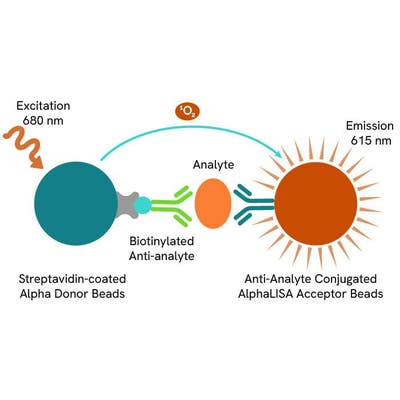

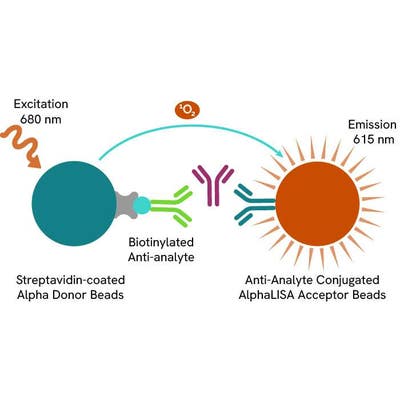 View All
View All
AlphaLISA Human HVEM Detection Kit, 5,000 Assay Points
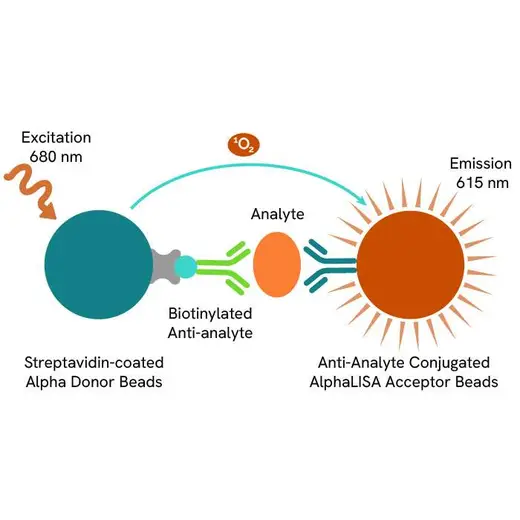

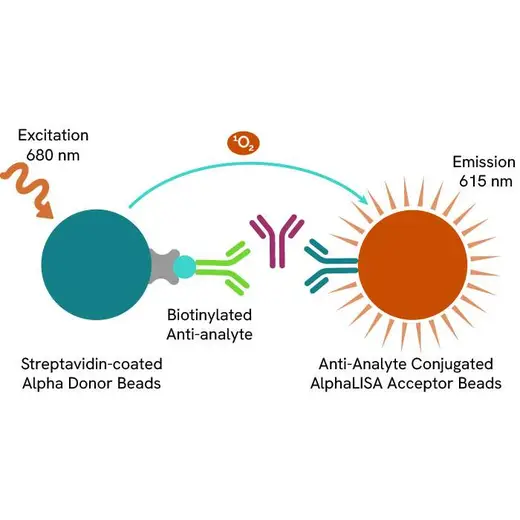




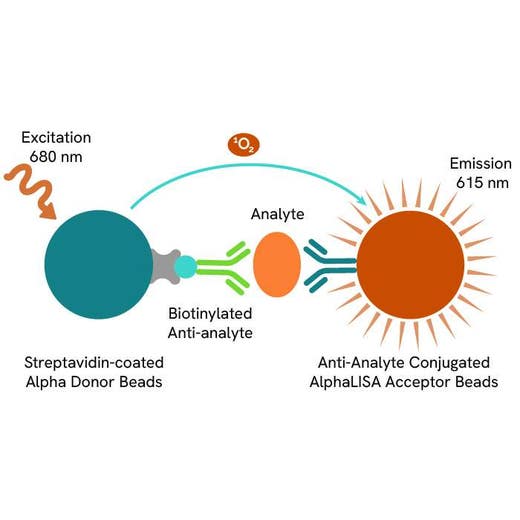

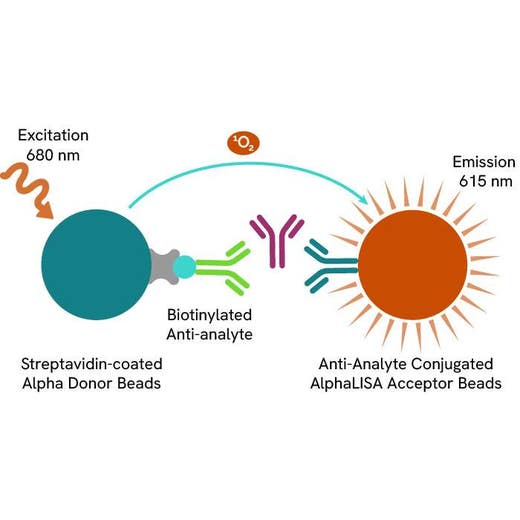




The AlphaLISA™ immunoassay kit for human herpesvirus entry mediator (HVEM) enables the quantitative determination of human HVEM (also known as TNFRSF14, CD270) in buffered solution and cell culture supernatants using a homogeneous AlphaLISA assay (no wash steps).
| Feature | Specification |
|---|---|
| Application | Protein Quantification |
| Dynamic Range | 3 - 300,000 pg/mL |
| Limit of Detection | 3 pg/mL |
| Limit of Quantification | 11 pg/mL |
| Sample Volume | 5 µL |
The AlphaLISA™ immunoassay kit for human herpesvirus entry mediator (HVEM) enables the quantitative determination of human HVEM (also known as TNFRSF14, CD270) in buffered solution and cell culture supernatants using a homogeneous AlphaLISA assay (no wash steps).







AlphaLISA Human HVEM Detection Kit, 5,000 Assay Points







AlphaLISA Human HVEM Detection Kit, 5,000 Assay Points







Product information
Overview
Formats:
- Our 100 assay point kit allows you to run 100 wells in 96-well format, using a 100 µL reaction volume (10 µL of sample).
- Our 500 assay point kit allows you to run 500 wells in 96-well or 384-well format, using a 50 µL reaction volume (5 µL of sample).
- Our 5,000 assay point kit allows you to run 5,000 wells in 96-well or 384-well format, using a 50 µL reaction volume (5 µL of sample).
Features:
- No-wash steps, no separation steps
- ELISA alternative technology
- Sensitive detection
- Broad sample compatibility
- Small sample volume
- Results in less than 3 hours
- Half the time of an ELISA assay
AlphaLISA technology allows the detection of molecules of interest in buffer, cell culture media, serum and plasma in a highly sensitive, quantitative, reproducible and user-friendly mode. In an AlphaLISA assay, a Biotinylated Anti-Analyte Antibody binds to the Streptavidin-coated Alpha Donor beads, while another Anti-Analyte Antibody is conjugated to AlphaLISA Acceptor beads. In the presence of the analyte, the beads come into close proximity. The excitation of the Donor beads provokes the release of singlet oxygen molecules that triggers a cascade of energy transfer in the Acceptor beads, resulting in a sharp peak of light emission at 615 nm.
Herpesvirus entry mediator (HVEM), also known as tumor necrosis factor receptor (TNFR) superfamily 14 and CD270, is a cell surface membrane protein that regulates T-cell immune responses by activating both inhibitory and inflammatory signaling pathways. HVEM is widely expressed on the plasma membranes of hematopoietic lineage cells, such as natural killer cells, monocytes, dendritic cells, neutrophils, T-cells and B cells. This membrane protein functions as a receptor and or ligand for BTLA, CD160, LIGHT and lymphotoxcin-alpha. Although little is known of the correlation of HVEM and cancer, it has been proven that elevated levels of HVEM have been associated in patients with autoimmune and allergic diseases such as atopic dermatitis, rheumatoid arthritis, and allergic asthma. This kit is designated to detect and quantify the levels of HVEM in cell culture supernatant and serum.
Specifications
| Application |
Protein Quantification
|
|---|---|
| Automation Compatible |
Yes
|
| Brand |
AlphaLISA
|
| Detection Modality |
Alpha
|
| Dynamic Range |
3 - 300,000 pg/mL
|
| Limit of Detection |
3 pg/mL
|
| Limit of Quantification |
11 pg/mL
|
| Product Group |
Kit
|
| Sample Volume |
5 µL
|
| Shipping Conditions |
Shipped in Blue Ice
|
| Target |
HVEM
|
| Target Class |
Biomarkers
|
| Target Species |
Human
|
| Technology |
Alpha
|
| Therapeutic Area |
Inflammation
|
| Unit Size |
5,000 Assay Points
|
Image gallery






AlphaLISA Human HVEM Detection Kit, 5,000 Assay Points






AlphaLISA Human HVEM Detection Kit, 5,000 Assay Points






Video gallery

AlphaLISA Human HVEM Detection Kit, 5,000 Assay Points

AlphaLISA Human HVEM Detection Kit, 5,000 Assay Points

Resources
Are you looking for resources, click on the resource type to explore further.
Membrane proteins, which are key in cellular signaling and often serve as disease biomarkers, are a significant focus in research...


How can we help you?
We are here to answer your questions.






























